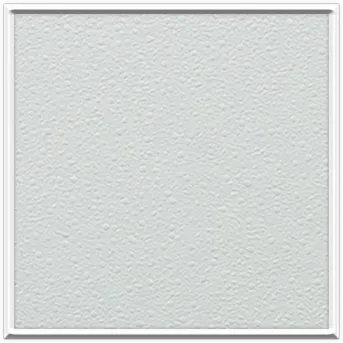Nov . 17, 2024 12:23 Back to list
hidden ceiling access panel
Understanding Hidden Ceiling Access Panels Importance and Applications
In modern architectural design, functionality and aesthetics are of paramount importance. Hidden ceiling access panels have become indispensable elements in both residential and commercial buildings. These panels offer a practical solution for accessing the spaces above ceilings—such as ductwork, plumbing, and electrical systems—while maintaining a seamless and visually appealing environment.
What is a Hidden Ceiling Access Panel?
A hidden ceiling access panel is a discreet opening in the ceiling that allows maintenance personnel or contractors to access overhead utilities and systems without causing extensive damage to the surrounding structure. Unlike standard access panels, which often feature visible frames or hinges, hidden panels are designed to blend into the ceiling, making them nearly invisible to the casual observer. They are often manufactured from drywall or other materials that can be painted or textured to match the ceiling, ensuring a cohesive look.
Importance of Hidden Ceiling Access Panels
1. Maintenance Efficiency One of the primary benefits of hidden ceiling access panels is that they provide easy and quick access to systems that require regular maintenance. This efficiency can significantly reduce downtime in commercial settings, where interruptions can lead to lost productivity.
2. Cost-Effective Solution By allowing access to overhead systems without the need for extensive demolition or repairs, hidden access panels can lead to savings on labor and materials. This cost-effectiveness is particularly beneficial in large facilities with complex systems.
3. Aesthetic Appeal Designers and architects often strive to create clean lines and uncluttered spaces. Hidden access panels eliminate the visual bulk of traditional access points, contributing to a more polished and cohesive interior design. This is especially important in high-end residential or commercial spaces.
4. Safety Features Many hidden ceiling access panels are designed with safety features, such as fire-rated materials, to comply with building codes. This ensures that while maintenance personnel have access to necessary systems, the safety and integrity of the building are not compromised.
hidden ceiling access panel

Applications of Hidden Ceiling Access Panels
Hidden ceiling access panels can be utilized in various settings, including
- Residential Spaces Homeowners can install hidden access panels to reach attic spaces, ductwork, or plumbing systems, all while keeping the interior appearance minimalistic. These panels are particularly useful in homes with aesthetic ceiling designs where traditional panels would disrupt the overall look.
- Commercial Buildings In offices, retail spaces, or hospitals, hidden access panels allow for the maintenance of critical systems such as HVAC, electrical wiring, and plumbing without detracting from the building’s design or functionality.
- Industrial Environments In warehouses and factories where machinery and utility systems are often housed within ceilings, hidden access panels provide a practical solution for routine inspections and repairs, ensuring continuous operations.
Installation Considerations
When planning the installation of hidden ceiling access panels, several factors should be considered. The location of utilities, the type of ceiling material, and the potential need for fire-rated panels are essential aspects to examine. It is crucial to ensure that the chosen panels meet local building codes and standards to maintain safety and compliance.
Conclusion
Hidden ceiling access panels contribute significantly to the practicality and aesthetics of modern spaces. By understanding their importance and applications, architects, builders, and homeowners can make informed decisions that enhance the functionality of their buildings while preserving a clean and appealing design. As buildings continue to evolve, these panels will play a vital role in shaping the future of architectural accessibility and maintenance.
-
Quality Ceiling Trap Doors & Access Panels | Easy & Secure AccessNewsAug.30,2025
-
Durable Ceiling T Grid Systems | Easy InstallationNewsAug.29,2025
-
PVC Gypsum Ceiling: Durable, Laminated Tiles for Modern SpacesNewsAug.28,2025
-
Pvc Gypsum Ceiling Is DurableNewsAug.21,2025
-
Mineral Fiber Board Is DurableNewsAug.21,2025
-
Ceiling Tile Clip Reusable DesignNewsAug.21,2025







